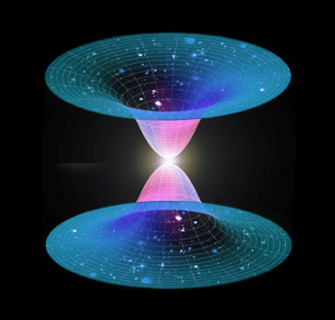Key Takeaways:
- Recent papers challenge traditional theories about black holes, suggesting they lack singularities and proposing a novel perspective based on loop quantum gravity.
- The research, led by Abhay Ashtekar, Javier Olmedo, and Parampreet Singh, applies the concept of loop quantum gravity, describing spacetime as a lattice of evolving spin networks with a smallest quantized unit.
- Contrary to previous beliefs, the papers propose that matter entering black holes might not vanish into singularities but could be expelled into the future across the Universe, creating structures similar to white holes.
- The theory suggests that the strong curving of spacetime near a black hole’s center extends into the future, forming a reverse structure resembling a white hole, which expels matter instead of attracting it.
- While challenging to test empirically, the study speculates that phenomena such as fast radio bursts and high-energy cosmic rays might offer clues supporting the theory.
Black holes, long shrouded in mystery, have captivated the scientific community with their enigmatic nature. Recent research, presented in two groundbreaking papers authored by Abhay Ashtekar, Javier Olmedo, and Parampreet Singh from Pennsylvania State University and Louisiana State University, challenges conventional theories regarding the workings of black holes.
Contrary to the widely accepted notion of singularities at a black hole’s center, the new theory proposes a novel perspective that involves matter being drawn into black holes and later ejected into the distant future, potentially redefining our understanding of the cosmos.
The foundation of this revolutionary approach lies in the application of loop quantum gravity, a theoretical framework describing spacetime as a lattice of evolving spin networks. Explained by Don Lincoln, a physics professor at the University of Notre Dame and senior scientist at the Fermi National Accelerator Laboratory, loop quantum gravity posits that spacetime is quantized, with a smallest possible unit or piece beyond which further subdivision is impossible.
In the context of black holes, the scientists argue that the intense curvature of spacetime near the center does not lead to a singularity but instead extends into the future, forming a structure akin to a white hole—a hypothetical celestial object that expels matter rather than drawing it in. This challenges the traditional narrative that matter entering a black hole vanishes into a singularity, suggesting instead that it resurfaces elsewhere in the Universe.

To comprehend this concept, envision time near the center of a black hole as significantly slowed down due to the immense gravitational forces at play. Rather than disappearance, matter entering the black hole is propelled forward in time, eventually being expelled back into the universe. This temporal distortion, according to the researchers, could explain the peculiar phenomenon of fast radio bursts observed in the cosmos.
While the proposed ideas are not easily testable, Carlo Rovelli, from the Center of Theoretical Physics in Marseille, France, suggests that empirical observations could potentially support this paradigm-shifting scenario. He highlights the intriguing possibility that fast radio bursts and the detection of very high-energy cosmic rays in Earth’s atmosphere might serve as observable signatures of black holes transforming into white holes.
In conclusion, these new theories challenge our fundamental understanding of black holes and their role in the cosmic tapestry. The papers, published in Physical Review Letters and Physical Review D, invite further exploration and scrutiny, opening doors to a realm of possibilities that could reshape the future of astrophysics. As scientists delve into the complexities of spacetime and celestial phenomena, the journey of matter through black holes unveils itself as a narrative yet to be fully comprehended, promising exciting discoveries and a redefined cosmic perspective.


